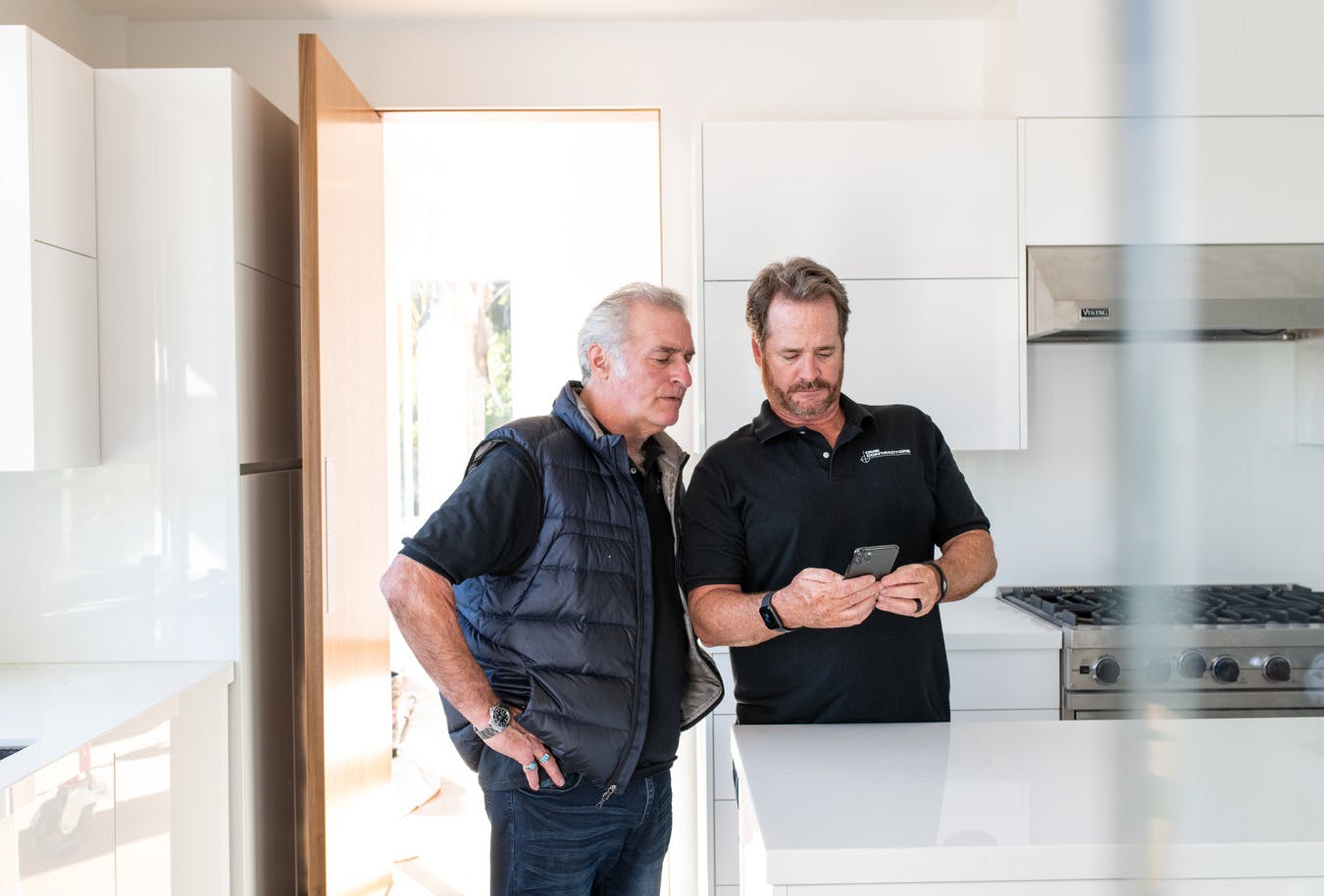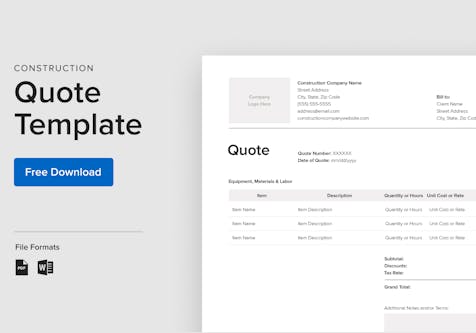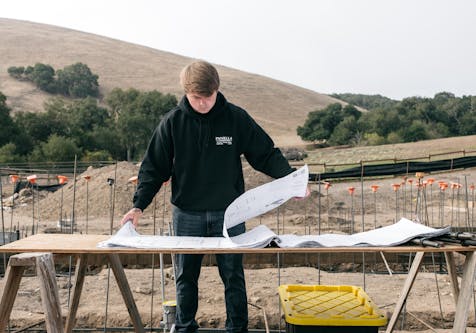9 Construction PR Tips Every Pro Should Know
Brand awareness and reputation go hand-in-hand! Learn how to nail PR for construction companies from do-it-yourself tips to hiring a construction PR agency.

Construction PR Tips to Win More RFPs
Public relations efforts aren’t just for celebrities and politicians. In the crowded and competitive construction industry, good publicity can give your company an edge and help you get more requests for proposals (RFPs) — the first step in landing a project. And while PR for construction companies is similar in some ways to PR for any business, there are important nuances to learn. Here we’ll share construction PR tips and why it’s important to utilize them, plus guidelines to help you decide when the do-it-yourself route is fine and when it’s better to hire a specialist.
Click on a link below to jump straight to the section you’re most interested in:
- Why is PR for construction companies important?
- Types of PR for construction companies
- DIY construction PR vs. using a construction PR agency
- Tips for choosing a construction PR agency
- 9 Tips for Successful DIY Construction PR
- How to know if your construction PR strategies are working
- Taking Your PR Up a Notch

Why is PR for construction companies important?
It’s well known that consumers gravitate toward brands they’re familiar with, plain and simple. In fact, 82% of participants in a study by marketing agency Red C chose a brand they were already familiar with when asked to “buy” something online. And construction PR strategies can be a strong factor in helping potential clients become more familiar with your brand — in other words, they can greatly raise brand awareness. But utilizing PR for construction companies can have additional benefits, including:
- Helping people discover your business
- Developing an appealing “story” for your business
- Making you stand out from your competitors
- Creating a positive image that builds trust
- Making your RFP submission stand out and be attractive — especially useful if there is public controversy around a project
- Helping manage any crises that might arise

Types of PR for construction companies
At a minimum, you’ll want to have your own website and a professional profile in popular searchable databases. Other PR outlets include:
- Social media: Written posts, photos, videos, polls
- Websites: Online industry and general magazines, blogs, trade association articles and listings, review aggregators — anything ready by potential clients or people who might act as referrals. You can work to get quoted or profiled, have your projects profiled and take out ads if you like
- Printed publications: Same as websites
- Events: Expos, conferences and other gatherings. You might have a booth or a giveaway or sponsor something as a way of advertising.

DIY construction PR vs. using a construction PR agency
Especially for newer companies with tighter budgets, the urge to save money with DIY publicity tactics can be strong. But paying for a PR pro is sometimes the best move. Consider the following factors.
- What is your PR budget? If it’s zero dollars, obviously you can skip ahead. If you have some budget, research what you can get for the amount you can spend. If you can allocate $2,000 a month for your construction PR efforts (which would be on the very low end, by the way) but you’re finding that all that might get you in your area is an intern posting on social media once a week, your money might be better spent on other types of marketing.
- How much time can you realistically spend on PR? Even posting a few times a week on social media takes time. You don’t want to slap up unedited photos and call it a day, especially when your competitors are curating and editing their project photos. And remember that users value and even expect interaction nowadays, so you’ll want to respond to any comments and direct messages in a timely fashion. And utilizing any of the other types of PR listed above only adds to the time. Ask yourself not just how much time you can spend on construction PR but how much time you want to spend on it. If the answer is less than an hour or so daily, it might be worth hiring a pro.
- What’s your skill set? You might be a whiz with CAD but clueless about posting on social media, pitching journalists, writing blogs and so on. If that’s the case, are you willing to invest the time and energy in learning? Is learning these aspects of PR even something you’re interested in? If the answer is no to either question, that’s a strong indicator that bringing a PR pro to your team can be a good idea.
- Do you already have media and industry contacts? As with other aspects of the construction business, relationships are a key factor. A big attraction of using PR people is their roster of established contacts, but if you already have many contacts at media outlets, you’re ahead of the game.
Keep in mind that as your company evolves, your PR needs might change. Smaller companies might be fine doing PR from within, and a “homey” touch conveying authenticity might even be a plus at that stage. Bigger companies with many projects, inquiries from potential clients and the media, and a higher profile in general might benefit more from hiring a professional dedicated to PR for construction businesses, to maintain a strong and focused brand identity across many channels.

Tips for choosing a construction PR agency
You’ll likely end up researching and interviewing several candidates to handle your construction business PR. As you do, look for:
- Construction industry experience. Because media contacts are so important to PR, look for a person or agency who has spent time building a roster in your specific industry rather than just general media contacts. At the same time, you don’t want someone who is already repping a direct competitor.
- Experience with several types of channels. Social media savviness is just the start. Look for someone who can expand brand awareness for you through a broad range of outlets, including websites, printed publications and events.
- A great reputation. Don’t take any reviews on the PR agency’s website as gospel. Check independent reviews, the Better Business Bureau and other consumer agencies.
- A great track record. Quantifiable success is important. Does the agency have hard data on how their clients’ businesses have grown due to their efforts?
- The comfort factor. As you’ll be working closely with this person, make sure he or she listens to you and cares about your specific construction PR needs, makes time for you, is enthusiastic about your business and is willing to explain anything you don’t understand. Do you like the person and get a good feeling about his or her ability to deliver results?

9 Tips for Successful DIY Construction PR
If you choose to take on your own public relations efforts, this blueprint can help.
1. Develop your story. For consistent messaging across outlets and to create a strong, cohesive brand identity, come up with a story for your business. What are your motivators and unique identifiers? What’s your mission? Write it all down and then refine it until it feels impactful.
2. Create a target list. Write down every outlet that can support your construction PR efforts. Include websites, printed publications and events as well as names of specific journalists if possible. Be creative. Where do your potential clients hang out online and in person? For instance, if you specialize in building homes for new families, you could perhaps sign on to sponsor a local family-friendly charity event.
3. Customize your pitches. Note the tone and content of each media outlet so you can tailor your pitch efforts accordingly. Also note where your story might dovetail with each outlet’s coverage. For instance, many outlets focus on dads and grads in June. If you’ve built an addition so an older dad could move in with his child and grandchildren, that’s a perfect pitch for a June story. Even if you use a form letter, be sure to tailor it a bit for each pitch so it doesn’t sound like one.
4. Start small. You don’t need to reach a huge audience in a day, or even a month. Good PR for construction companies tends to be targeted locally, so it can be more about quality than quantity. One well-placed article might be more valuable than a few months’ worth of social media posts, especially if you don’t have much of a following already.
5. Post your own content regularly. Photos of finished projects, time-lapse videos of works in progress, interviews with happy clients … all are great fodder for social media. It’s important to post regularly to convey consistency, and to address comments to show you’re responsive. If the platform you’re using supports hashtags, create a file with every one relevant to your business so you can copy and paste. (Hint: Check the posts of competitors whose posts get a lot of traction, and copy their hashtags.)
6. Piggyback on others’ content. Maybe you’re volunteering for a local charity and the work will be covered by the media. Maybe you’re partnering with an architect or an interior designer who has an established following. Anytime you work with someone else is a chance to shine in their spotlight by sharing their content and adding something about your contribution to the work. You also can share relevant industry news and heartwarming stories.
7. Consider courting influencers. While you certainly shouldn’t have to shell out cash to get someone with a large social media following to give you a shout-out, if you know that one of your projects will resonate strongly with an influencer, it can’t hurt to bring it to their attention. Be very careful about being spammy, however. For example, posting a photo and sharing it in a private message would be fine, while tagging a bunch of influencers in your photo would not.
8. Track your efforts. Not every construction PR effort will be directly traceable to more leads and projects. In fact, because the biggest aspect is building brand awareness in general, you might feel like you’re swinging for the fences in the dark most of the time. But track efforts where you can. For instance, you can analyze website traffic, ask leads how they heard about you, check the number of likes and shares on your social media posts, see how many people have opened your emails, and for some online articles even see the number of views.
9. Be patient. Great PR for construction companies is based on building great relationships, both with media outlets and your audience, and that takes time. If you don’t get a lot of readers or followers after several months of effort, you can always adjust your strategy.

How to know if your construction PR strategies are working
As mentioned above, it’s a good idea to track your efforts. Even though the overall goal of raising brand awareness isn’t quantifiable, you can measure results in a number of ways. (Hint: Set numeric goals in advance to give you something to shoot for.)
- Social media engagement. This is easy enough to track — at a glance you can see likes, shares and comments. Some platforms even aggregate the data on posts at no cost, while others offer paid analytics. If you post on multiple platforms, consider paying for a service that shows all of the performance data from the various platforms in one place.
- Search results ranking. This partly involves figuring out the search engine’s algorithm, but the more people who search out your business online because they heard about it somewhere else, the higher your rank will be. And getting at or toward the top of the search results is golden when it comes to construction PR.
- Media response. How many of your pitches turn into journalistic features, quotes in articles or other PR? How many media outlets respond at all to your pitches? It’s worth keeping a spreadsheet so you can build those all-important relationships with outlets who appreciate and value your work.
- Website analytics. Whether you simply want to know the number of unique daily visitors to your site or are curious about more detailed info, such as which pages viewers linger on and which they click right away from, analytics tools are your friends. Many hosting services and search engines offer free analytics tools — and you don’t need to learn all the complicated ins and outs to get valuable info.
- Client response. You can track which inquiries and leads come from newsletters, emails and your website. You can include a question on inquiry forms about how the person heard of you. And you can always just ask!

Taking Your PR Up a Notch
Following the above guidelines and tips is a fantastic way to get started on your construction PR efforts. When you’ve got a good foothold with those or if you want to kick things up a notch right away, targeting advertising can help your business get to the next level. And to free up more time for handling the PR, marketing and advertising that can help you grow your business, consider using dedicated construction management software such as Houzz Pro. It makes everything from creating takeoffs to billing for services easier for you, your team and your clients!
More

Want advice delivered to your inbox?
Unlock industry insights and updates for contractors and design pros
By signing up, I agree to the Houzz Terms of Use and Privacy Policy and that Houzz may use my information to contact me about relevant content, products, and services.









Join the conversation by commenting or asking a question below. The Houzz team reads every single comment, and we’ll get back to you by email if you need us!